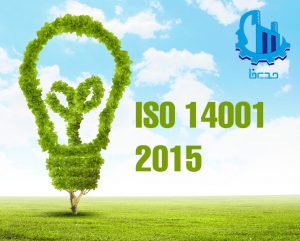
If you need advice on implementing the ISO14001 standard, please contact our experts at Modirfa.
02188764867 – 02188761795

ISO14001 standard
The ISO14001 standard, the environmental management system, as an international standard provides information about the implementation of an effective environmental system to its audience, which has a 10-point structure similar to ISO9001 standard has it.
The main goal of the ISO 14001 standard is to create a proper balance between the following two goals.
1- Profitability
2- Reducing environmental pollution
The implementation of the ISO 14001 standard and its requirements is a help in achieving these goals.
Also, obtaining the ISO 14001 standard certificate can be a proof of the implementation of environmental laws and the organization’s respect for the environment.
The last edition of this standard was published in 2015 by the ISO organization.
Objectives of ISO14001 standard implementation
As an effective and active element in the management system, it has improved the environmental performance of the organization, made the management system coherent and standardized, coordinated the implementation and management of affairs, introduced managers to problem solving methods and identified existing structural obstacles. Makes. This standard is flexible and its components are chosen realistically according to the characteristics of each organization as well as the environmental laws and conditions of each country, and it is established with the aim of establishing an environmental management system in the existing system of an organization, company, etc. , to identify environmental problems and risks related to the organization’s activities in different parts in a targeted and systematic way and then categorize them.
In the next step, according to the prioritization, specific plans are developed in order to control and reduce the mentioned risks and problems, in which the field of activity, time, responsibilities and methods of doing the work are precisely defined.
Benefits of implementing ISO14001 environmental management system standard
- Ensuring environmental protection at the local, national, regional and global levels
- Improving management methods, especially promoting and encouraging environmental management activities and improving internal and external communication
- At the global level, entry into environmental management systems will create comprehensive agreement and create credibility and acceptance
- Reducing the consumption of natural resources and raw materials
- Reducing energy consumption
- Reducing waste and waste and using recycling methods
- Increasing compliance with environmental regulations and laws
- Emergency preparedness and response
- Reduction of complaints, fines and penalties
- Delete redundancies
- Improving productivity due to the use of human, natural, economic resources and the efficiency of goods and services
- Improving health and safety
- Improving the quality of the natural and human environment and achieving sustainable development
- The impact of using the ISO 14001 environmental management system on the organization’s activities
- Improving the level of public awareness of personnel regarding environmental issues and ISO, which leads to compliance with environmental issues and… Also, problems are identified and solutions are provided to solve them
- Saving fuel and energy consumption through the optimal and appropriate purchase of items and goods in accordance with ISO standards (in order to make them last longer and avoid wasting resources)
- Optimum use of resources regarding paper consumption by creating awareness among personnel
- Successful implementation of the waste separation plan by applying training at all organizational levels
- Evaluating compliance with environmental issues by contractors during repeated visits to the relevant areas and the environment and energy unit and taking action to resolve the issue through warning and applying deductions in case of their condition.
- Regarding the concessions given to contractors, regarding compliance with environmental issues, in the selection of competent contractors
- Observance of health and safety issues during work by all workers and contractors
- Compilation of quantitative and qualitative statistics of environmental performance of different areas in order to complete the existing documentation
- Apply the topic 19 National building regulations and the use of new methods in buildings by different commissions for residential complexes in terms of reducing energy consumption
- Investigating various environmental aspects in carrying out all major projects in the region
- Establishing the environment and energy unit in the region to implement macro and micro goals and how to monitor the optimal implementation of programs
- Evaluating the performance of different units regarding environmental issues
- Preparing training booklets and conducting training courses for employees
- Communicating with stakeholders in various ways such as: Internet, survey forms, city message system and…
- Training contractors with the region in relation to environmental, safety and health issues
- Addition of ISO 14001 clause in all contracts concluded with contractors at the regional level and requiring them to comply with all environmental issues
- Communication with other organizations such as environmental organization, material recycling and conversion organization, etc. in relation to environmental issues related to their activities
Conclusion
The ISO 14001 standard is applicable to any organization, regardless of its size, type, and nature, and it applies to the environmental aspects of the activities, products, and services that the organization determines, and by considering the life cycle perspective, it can control or influence. ISO 14001 does not specify specific environmental performance criteria.
The ISO 14001 standard can be used in whole or in part for the systematic improvement of environmental management. Claims of compliance with ISO 14001, however, cannot be accepted unless all its requirements are incorporated into an organization’s environmental management system and are met without exception.
Beware of unlicensed and fraudulent organizations.
Be sure that if an organization gives you an ISO certificate without implementing it in your organization and conducting an audit, it must be a fraud.

